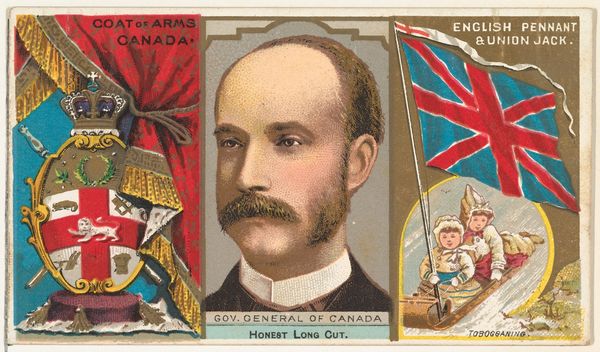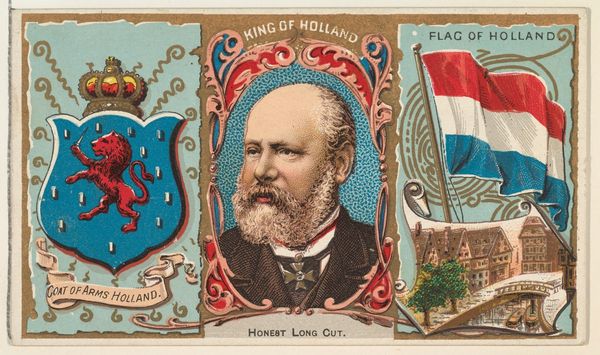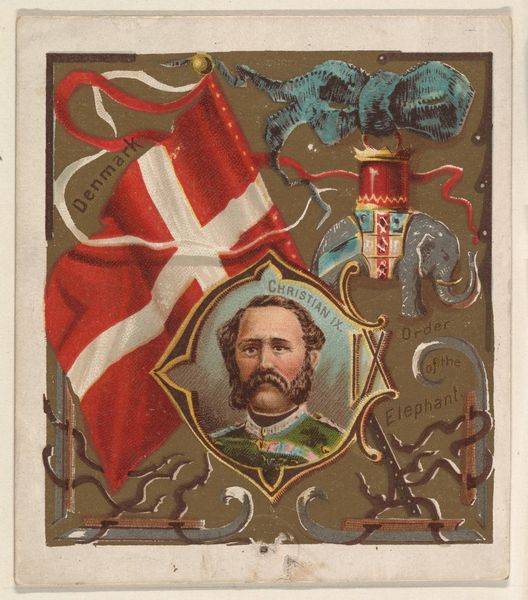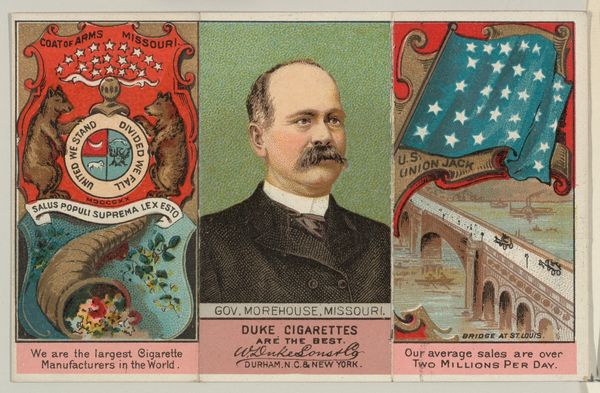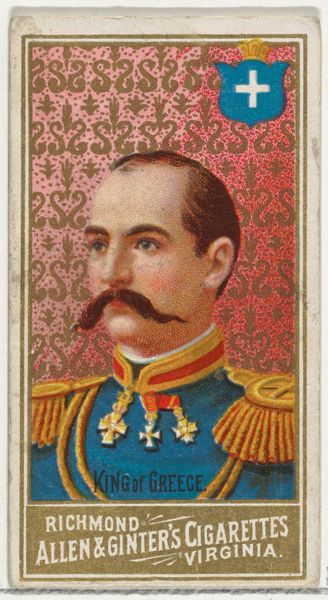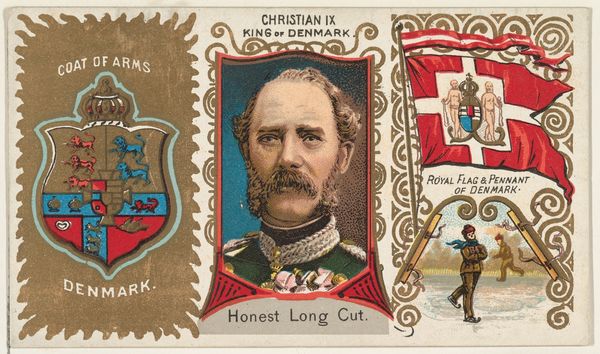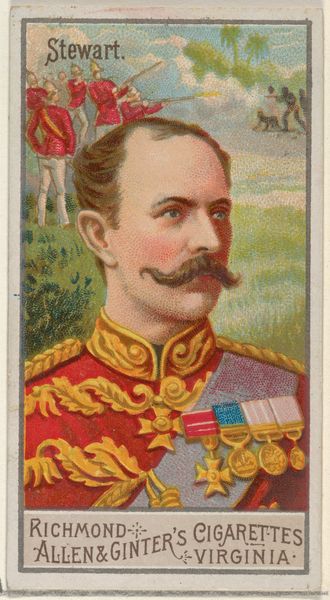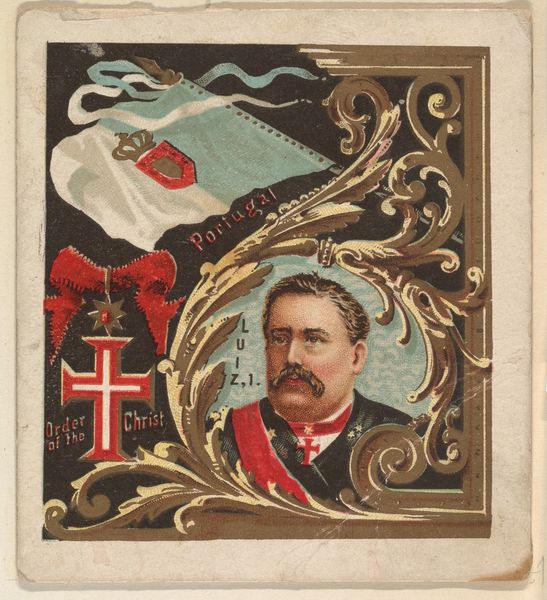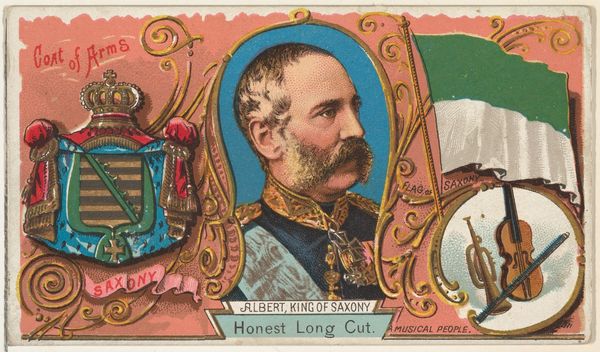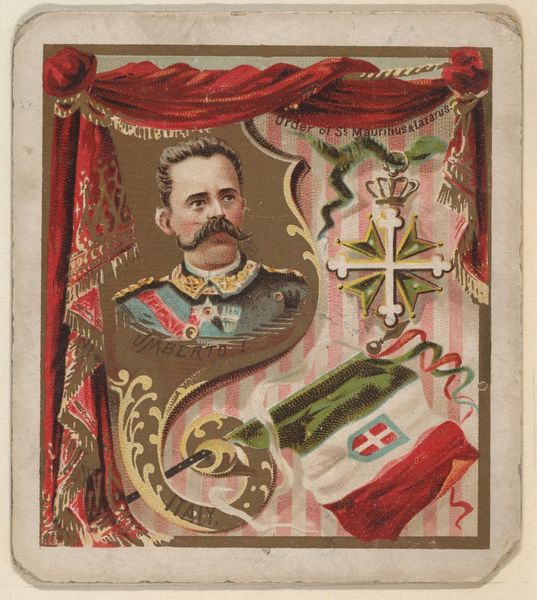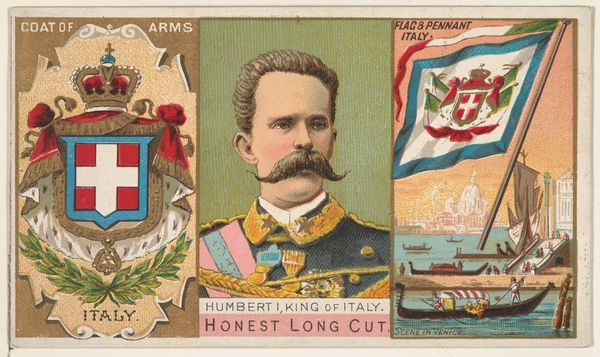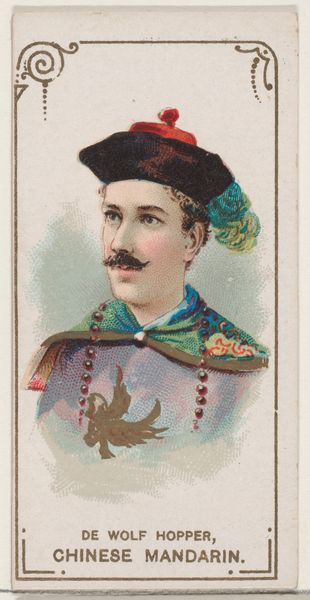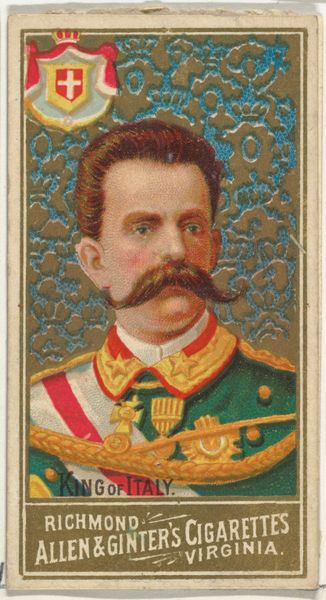
George I, King of Greece, from the Rulers, Flags, and Coats of Arms series (N126-1) issued by W. Duke, Sons & Co. 1888
0:00
0:00
Dimensions: Sheet: 2 1/2 × 4 5/16 in. (6.4 × 11 cm)
Copyright: Public Domain
Curator: This brightly colored print from 1888, "George I, King of Greece," comes from a series of collectible cards issued by W. Duke, Sons & Co., titled "Rulers, Flags, and Coats of Arms." It's a fascinating snapshot of how royalty was perceived and distributed as a commodity at the time. Editor: My first impression? It's meticulously constructed. The artist has cleverly separated the composition into three framed panels, which function almost like distinct narrative beats. Curator: Indeed. Let’s delve into the symbolism within each frame. On the left, we see the Greek coat of arms, a crowned shield bearing a gold cross. This heraldic device obviously speaks of nationhood, power, and the deeprooted significance of Christian faith in Greek identity. The prominent cross alludes to its role in culture and history, not only a national emblem but also an instantly recognizable marker of shared values. Editor: Yes, and the central panel—King George himself. The tight framing and level gaze command the viewer's attention. Note how his facial features, particularly his mustache, are exaggerated. We might interpret it as simple flattery but I see a light caricature at play. It subtly shifts from formal portraiture to something closer to mass media. Curator: An excellent point. To the right, the Greek flag waves proudly, juxtaposed with what's labeled "Grezian Lady". This pairing underscores national pride alongside an idealized image of Greek womanhood, together they stand for collective Greek identity. I feel these popular representations also reflect the long shadows cast by classical ideals in the imagination. Editor: Absolutely. Looking closely, the artist utilizes contrasting hues to direct your eye. See how the deep blues of the flag and coat of arms amplify the rose and golds of the portraits. Moreover, notice that the flat areas of color and crisp outlines recall the stylistic trends popularized by ukiyo-e prints. Curator: That cross-cultural blending is one of the great strengths here. And note the inscription under George's portrait, which oddly names a tobacco cut. The juxtaposition gives royalty itself an odd kind of commodity value in that era. Editor: Well observed. Overall, the tight composition creates a potent blend of national pride and subtle satire. Its impact far surpasses what one might expect from such a humble, unassuming print. Curator: I agree. These layered historical, cultural, and religious readings enhance the charm that is held in this portrait.
Comments
No comments
Be the first to comment and join the conversation on the ultimate creative platform.
